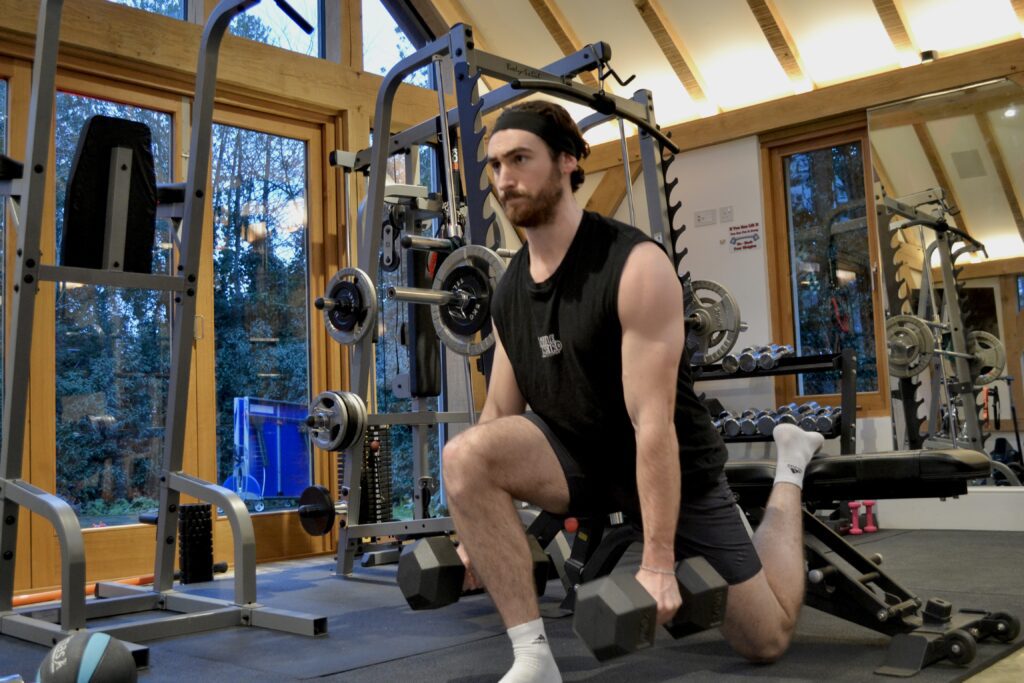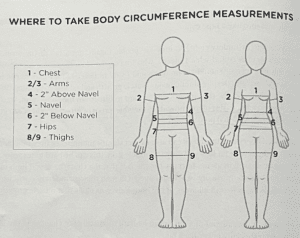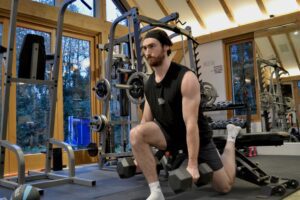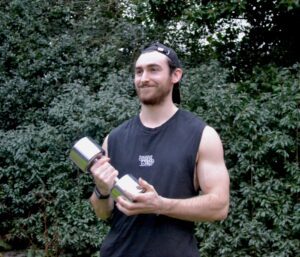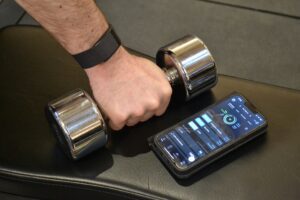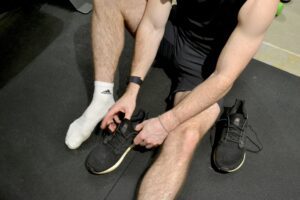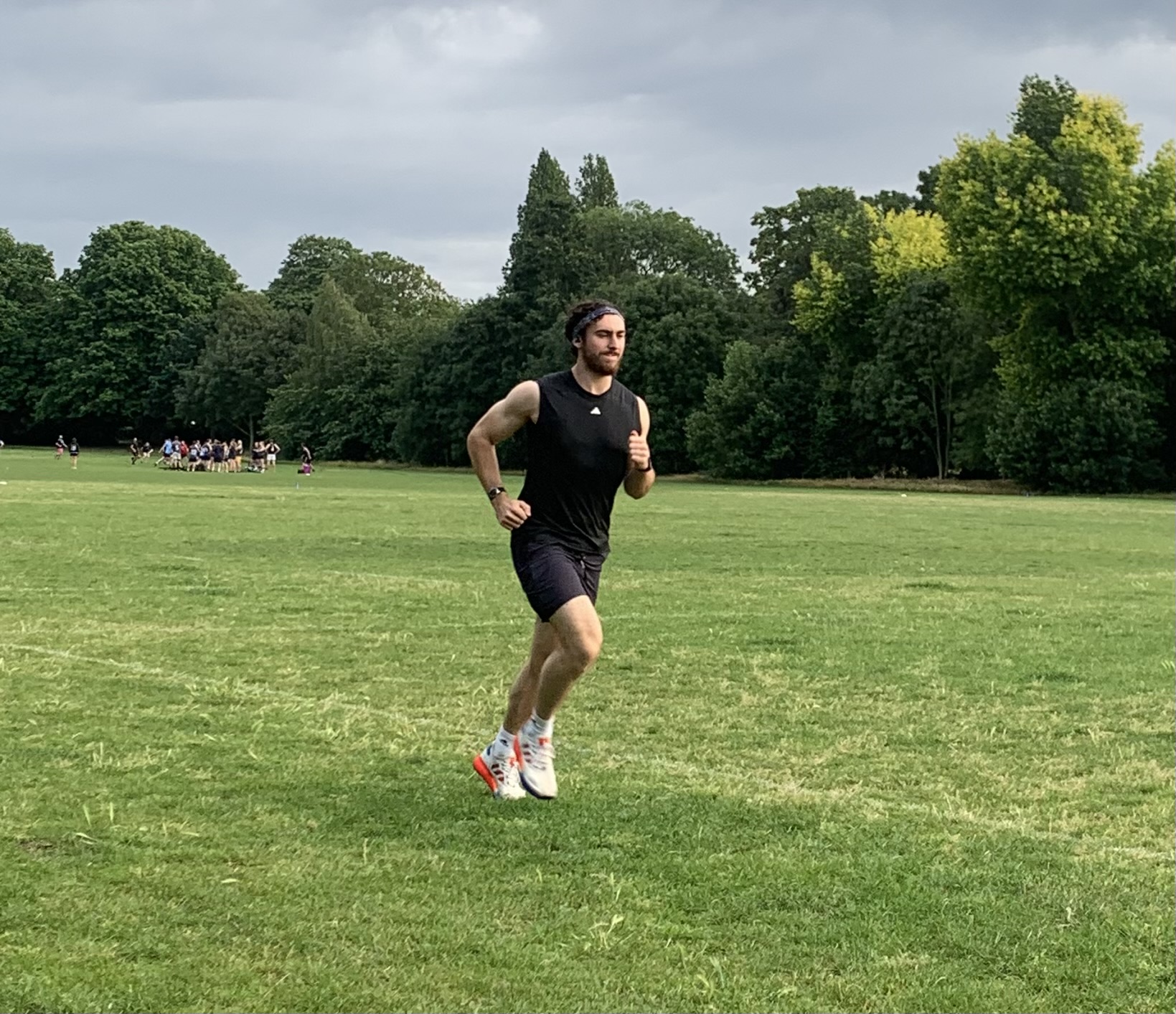What Is Functional Fitness?
In its simplest terms, functional fitness involves training with a specific purpose in mind. This necessitates that your training has a specific purpose relating to your goals. In my case, my training is built around longevity, longevity in sport, and sporting performance. Simply put, I want to live a long time, play sport for as long as possible, and get my body in prime condition to perform at my best in my chosen sports (golf and tennis). Therefore, when I choose or create a training plan for myself, they are chosen/designed in accordance with these goals. For this reason, when creating or choosing a training plan, it’s important to start by evaluating your goals before jumping (blindly) into a plan.
Previous Injury History
Furthermore, previous injuries and physiological conditions are equally important considerations when choosing a workout plan that’s best for you. If you have a history of spinal injuries (for example) then this should be factored into your training plan. For someone with a herniated disk at L5-S1, you’d likely be better off focusing on unilateral squats, rather than bilateral back squats that can compress and put more strain on the spine. Equally, given the nature of this injury, you will want to focus on exercises that strengthen the back and core muscles, which can increase support of the spine. Failure to stabilise/control core movements increases the risk of acute (short term) and chronic (long term) injury to the vertebral column and the key role of the trunk muscles in providing stability to the lumbar spine is well established in research (3., 2000). So in summary, when choosing a workout plan, make sure you start with your goals and injury history before deciding what exercises you should or shouldn’t do in the gym. If you are unsure where to start, then seek advice from both a physical therapist and personal trainer. My belief is that the best results come from collaboration between experts e.g., working with both a PT and physio to develop a safe and effective plan for YOU.
“A program should carefully blend concepts and knowledge from areas such as sports medicine, physical therapy, and sports performance to create the best possible scenario for that particular athlete” (1., p.3).
Mike Boyle’s Three Questions To Define Functional Training
In his book New Functional Training For Sports, Mike Boyle (1., p.2) says that in order to better understand the concept of functional training, you should ask yourself three simple questions:
Q1: How Many Sports Are Played Sitting Down?
- Only a few sports like rowing are performed in a seated position.
- Therefore, training muscles from a seated position is not functional for most sports (remember functional = has a specific purpose).
Q2: How Many Sports Are Played in a Rigid Environment Where Stability is Provided By Outside Sources?
- Most sports are contested on fields and courts, so the answer here would appear to be none.
- The stability is provided by the athlete, not by some outside source.
- Using machines, load is stabilised for the lifter by the machine and therefore is not functional. It may be safer using machines, but there is a clear trade-off for relative safety in the weight room.
- The lack of proprioceptive input (internal sensory feedback about position and movement) and the lack of stabilisation will more than likely lead to a greater number of injuries during competition.
Q3: How Many Sports Skills Are Performed By One Joint Action in Isolation?
- Again, the answer would appear to be none.
- Functional training attempts to focus on multi-joint movement as much as possible.
“Single joint movements that isolate a specific muscle are very nonfunctional. Multi-joint movements which integrate muscle groups into movement patterns are very functional” (2., paragraph 13).
Mike Boyle argues that functional training is best characterised by exercises done with “both feet in contact with the ground, and with few exceptions, without the aid of machines” (1., p.3). If possible (considering your age, ability and injury history) I believe this is the best way to train for a healthy, balanced and functional body. I say “considering your age, ability and injury history” as naturally there can be a time and place for machines, particularly for older individuals looking to build muscle. For example, a lat pulldown may be a good alternative for an 80-year-old man who is unable (or unwilling) to try an assisted chin up/pull up using resistance bands. However, for young and healthy individuals (who are not pursuing bodybuilding or training as a physique competitor) I would focus on multi-joint and unilateral (affecting one side only) movements that prioritise balance, stability and proprioception (body awareness).
Case Study – My Transition from Bodybuilding to Functional Training
When I first started lifting weights, my primary goal was to build muscle and “get Jacked” (pardon the pun). Giving myself some credit, I did this to great effect and built around 7kg of muscle over a couple of years, and during the process, completely changed my body composition. However, as I started to play more golf and tennis again, I found that my training in the gym was no longer complementing my pursuits. I had all this new muscle and strength, and yet I felt no better for it on the tennis court or golf course. When playing tennis, I felt heavy on my feet and was struggling with hip issues. I was also struggling with tennis elbow, which was particularly painful on the serve and quite debilitating at times (tiger balm was a staple in the tennis bag). When playing golf, I felt lots of tightness in my hips and lower back, and my swing was physically limited by a lack of hip mobility and pelvic control. It became clear at this point that whatever work I was doing in the gym was no longer complementing my new goals – to develop a balanced body primed for speed and power.
The Benefits of Physical Therapy
Struggling with my hip pain, tennis elbow and lack of mobility I hobbled (not really) to the physio and got to work. After doing some basic movement screenings, we were able to get to the root of my issues. By prioritising bilateral movements in the gym (e.g., barbell row, barbell bench press, barbell overhead press, and in particular the barbell squat) I had created significant imbalances in my body and developed large strength deficits between sides. This was causing me to overcompensate during bilateral lifts, which in turn was causing pain in my hips and shoulder joints. By neglecting unilateral work in the gym, I lacked mobility too, especially in my hips.
Attempting some basic plyometric jumps and hops, we discovered that my single leg strength and stability was seriously lacking, despite the fact I could squat and deadlift significant loads bilaterally. Doing basic 90 degree hops, I was completely unable to remain balanced upon landing and performing a single leg deadlift (using only my bodyweight) proved an impossible task for my unstable hips and weak glutes. In summary, whilst I had done a great job of building muscle, by neglecting unilateral exercises and prioritising bilateral movements, I had built a strong but ineffective body for sport. Whilst I was strong, I had no usable power, balance, mobility and single leg strength to improve my sporting performance.
Mike Boyle – The Answer to My Problems
At this point in my journey, I started looking for some answers to my problems. The physio rehab exercises were working a treat, but I wanted to figure out a way of incorporating these exercises into a weekly training plan that aligned with my new goals – to develop a balanced body primed for speed and power (and performance in tennis and golf). Speaking to a performance coach for guidance, I was introduced to Mike Boyle’s work and naturally discovered his book – New Functional Training for Sport (second edition). As I started reading Mike’s book, I was instantly struck by how simple the concepts were, and how much it all made immediate sense to me. his book helped me realise I’d been blindly training like a bodybuilder with no consideration for how this would affect my body and it’s ability to perform specific movements. From this point onwards, I implemented Mike’s training principles into my workouts and haven’t looked back since!
To end this post, I wanted to share some key bullets from Mike’s book that highlight some of the basic principles of functional training and how it works. For anyone looking to build a strong and balanced body prepped for the physical demands of life and sport, this is truly a must read from one of the Godfathers of strength, conditioning and sporting performance.
Mike Boyle – How Functional Training Works
- “In its most basic application, functional fitness prepares an athlete to play his/her sport.
- Functional training uses many concepts developed by sports coaches to train speed, strength, and power in order to improve sport performance and reduce incidence of injury.
- A functional program should carefully blend concepts and knowledge from areas such as sports medicine, physical therapy, and sports performance to create the best possible scenario for that particular athlete.
- Functional training teaches an athlete how to handle their own body weight. The coach initially uses body weight as resistance and strives to employ positions that make sense to the participant.
- Functional training intentionally incorporates balance and proprioception (body awareness) into training through the use of unilateral exercises.
- Functional training programs need to introduce controlled amounts of instability so that the athlete must react in order to regain their own stability (2., 2022).
- The best and simplest way to introduce instability is to simply ask an athlete to perform an exercise standing on one leg.
- By design, functional training utilises single-leg movements that require balance to properly develop the muscles in the way they are used in sport.
- Simply learning to produce force while under heavy load and on two feet is nonfunctional for most athletes (e.g., bilateral back squat).
- Functional training involves simple versions of squatting, forward bending, lunging, pushing, and pulling. The purpose is to provide a continuum of exercises that teach athletes to handle their own body weight in all planes of movement.
- Functional training programs train movements, not muscles.
- There is no emphasis on overdeveloping strength in a particular movement.
Instead, emphasis is on attaining a balance between pushing and pulling strength and between knee-dominant hip extension (quadriceps and gluteals) and hip-dominant hip extension (hamstrings and gluteals)” (1., p.3).
If you want to learn more about functional fitness from me personally, please get in touch!
References:
- Boyle, A (2016). New Functional Training For Sports. Human Kinetics.
- Gambetta, V., and G. Gray (2002). The Gambetta Method: Common Sense Guide to Training for Functional Performance. Gambetta Sports Training Systems: Sarasota, FL.
- Granata, K. P., & Marras, W. S. (2000). Cost-benefit of muscle cocontraction in protecting against spinal instability. Spine, 25(11), 1398-1404. https://doi.org/10.1097/00007632-200006010-00012

